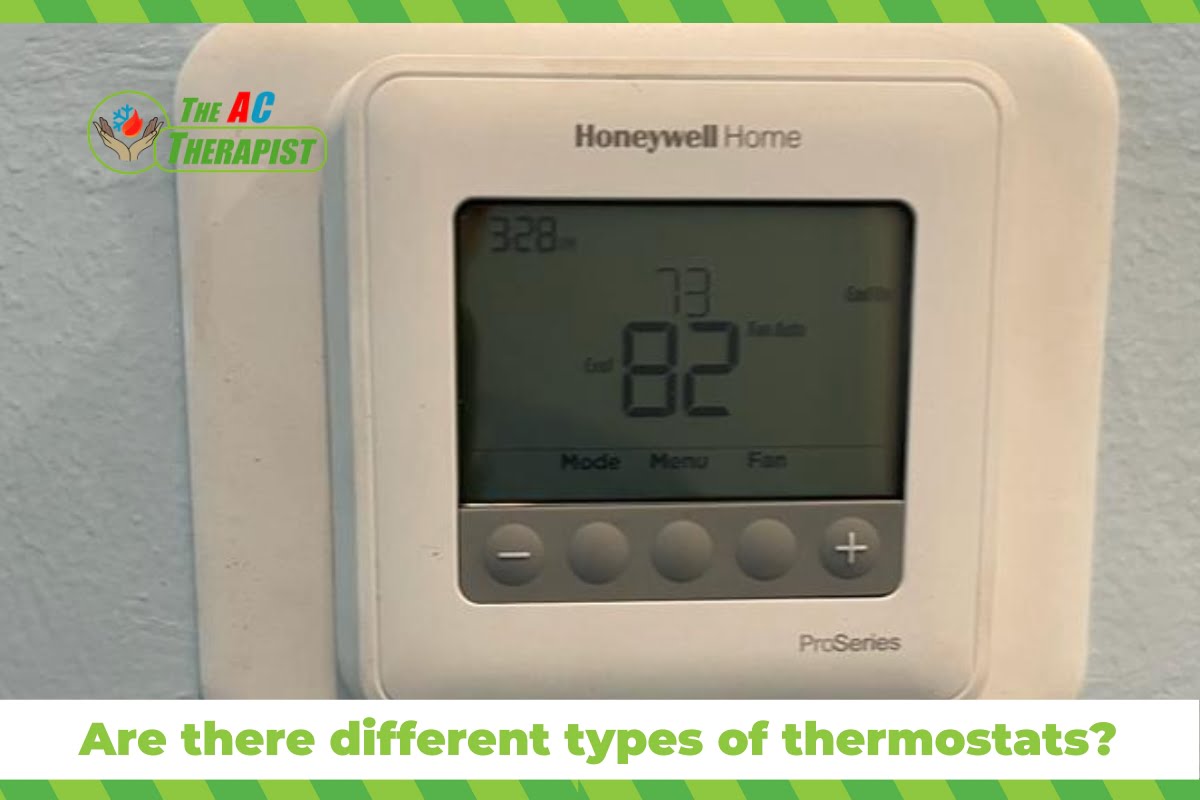Are there different types of thermostats?
Thermostats are crucial in maintaining indoor comfort and energy efficiency in our homes. With advancements in technology and a growing demand for energy-saving solutions, the market now offers a wide range of thermostat types to choose from. In this comprehensive guide, we will explore the various types of thermostats available, their features, benefits, and considerations when choosing the right one for your HVAC system.
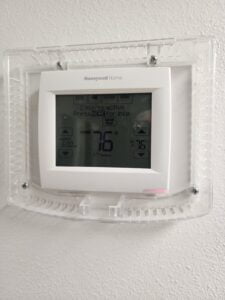
The Importance of Thermostats in HVAC Systems
Thermostats act as the control center for heating, ventilation, and air conditioning (HVAC) systems. They regulate indoor temperatures by activating the HVAC equipment based on the user’s preferences. A well-chosen thermostat can not only enhance your comfort but also contribute to significant energy savings.
Thermostats serve as the control center of heating, ventilation, and air conditioning (HVAC) systems, playing a pivotal role in maintaining indoor comfort and energy efficiency. These small devices are responsible for regulating the temperature within your living spaces, ensuring that your home remains at the desired level of warmth or coolness. Beyond temperature control, thermostats also contribute to energy savings and overall system performance.
- Temperature Regulation: At its core, a thermostat’s primary function is to regulate the temperature of your indoor environment. It detects the current temperature and compares it to the set temperature, activating or deactivating your HVAC equipment accordingly. This regulation ensures that you and your family are comfortable year-round, regardless of external weather conditions.
- Energy Efficiency: Thermostats play a significant role in energy conservation. Programmable and smart thermostats allow you to create heating and cooling schedules, ensuring that your HVAC system operates only when needed. By setting lower temperatures during periods when you’re away or asleep, you can reduce energy consumption and lower utility bills.
- Precise Control: Modern thermostats offer precise control over your HVAC system. Digital displays provide accurate temperature readings, and you can adjust settings with a few button presses. This level of control enables you to fine-tune your indoor climate to your preferences.
- Smart Features: Smart thermostats take control to the next level. They learn your schedule and adjust temperatures automatically, optimizing energy usage. Some models even have occupancy sensors that adjust settings when no one is home. Remote access via smartphone apps empowers you to change settings from anywhere, ensuring your home is comfortable when you return.
- Zoned Comfort: Zoned thermostats are particularly useful for homes with multiple levels or distinct areas. By dividing your home into zones, you can set different temperatures for each zone based on its usage. This leads to targeted comfort and prevents energy waste in unoccupied areas.
- Energy Savings: A well-regulated thermostat can contribute significantly to energy savings. According to the U.S. Department of Energy, reducing your home’s temperature by 7 to 10 degrees Fahrenheit for 8 hours a day can result in energy savings of about 10% per year. Thermostats make achieving this level of efficiency simple.
- Environmental Impact: Energy-efficient HVAC systems, guided by smart or programmable thermostats, have a positive impact on the environment. Reduced energy consumption leads to fewer greenhouse gas emissions, contributing to a more sustainable and eco-friendly lifestyle.
- Comfort and Convenience: Beyond energy efficiency, thermostats enhance your overall comfort and convenience. You can wake up to a warm home in the winter or arrive in a cool environment during the summer. Smart thermostats even adjust settings based on weather forecasts, ensuring your comfort regardless of external conditions.
Common Features Across Different Thermostat Types
While thermostat types vary, there are certain features that are common among many modern models. These include temperature adjustments, mode selection (heat, cool, auto), fan control, and scheduling capabilities. However, each thermostat type offers unique features that cater to different needs and lifestyles.
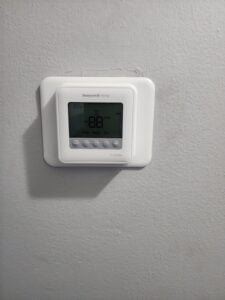
Types of Thermostats and Their Unique Features
- Smart Thermostats: These cutting-edge devices connect to the internet and offer remote control through smartphone apps. They often include learning algorithms to adapt to your schedule and preferences, enabling energy-efficient temperature management.
- Programmable Thermostats: These allow you to set schedules for different times of the day, reducing energy consumption by adjusting temperatures when you’re away or asleep.
- Digital Thermostats: Featuring digital displays, these offer accurate temperature readings and easy-to-use controls for precise adjustments.
- Analog Thermostats: Traditional circular or rectangular thermostats with manual dials for straightforward temperature settings.
- Wi-Fi Thermostats: Offering remote access via Wi-Fi connectivity, these allow you to control your HVAC system from anywhere, enhancing convenience and energy management.
- Zoned Thermostats: Ideal for multi-story or large homes, these control different zones separately for customized comfort and efficiency.
- Wireless Thermostats: Operating via radio frequency signals, these eliminate the need for wiring between the thermostat and HVAC equipment.
Factors to Consider When Choosing a Thermostat
Selecting the right thermostat involves considering compatibility, user interface, energy-saving features, remote access capabilities, and budget constraints. Each home has unique needs, so it’s essential to choose a thermostat that aligns with your preferences and lifestyle.
Selecting the right thermostat for your HVAC system is a crucial decision that directly impacts your home comfort and energy efficiency. With a wide array of thermostat options available, each offering unique features and benefits, it’s important to consider several factors before making your choice. Here are the key factors to keep in mind when choosing a thermostat:
- Compatibility with HVAC System: Ensure that the thermostat you choose is compatible with your heating and cooling equipment. Different systems (heat pump, furnace, air conditioner) require specific thermostat types to function optimally.
- User Interface and Control: Consider the ease of use of the thermostat’s interface. Some people prefer digital displays with touch controls, while others might be more comfortable with traditional analog dials. A user-friendly interface enhances your ability to adjust settings accurately.
- Energy Efficiency Features: Look for energy-saving features such as programmable schedules and adaptive algorithms. Programmable thermostats allow you to set specific temperature schedules for different times of the day, minimizing energy consumption when you’re away or asleep.
- Remote Access and Connectivity: Smart and Wi-Fi thermostats offer remote access through smartphone apps or web interfaces. This allows you to control your HVAC system from anywhere, making it easy to adjust settings while you’re away or when unexpected changes occur.
- Sensors and Learning Capabilities: Smart thermostats often have built-in occupancy sensors that detect whether people are at home. Some models even learn your schedule and adjust temperatures automatically based on your habits, optimizing energy usage.
- Zoning and Multiple Zones: If you have a larger home or want to customize comfort in different areas, consider zoned thermostats. These allow you to control temperatures in specific zones independently, providing personalized comfort and energy savings.
- Wiring and Installation: Understand the wiring requirements for the thermostat you’re considering. Some thermostats may require a common wire (C-wire) for proper operation. Depending on your home’s wiring setup, you might need professional installation.
- Compatibility with Home Automation: If you have a smart home setup, ensure that the thermostat integrates seamlessly with your existing automation devices and platforms. Compatibility with voice assistants like Amazon Alexa or Google Assistant can enhance convenience.
- Budget Considerations: Thermostat prices vary based on their features and capabilities. Set a budget and choose a thermostat that offers the features you need without exceeding your financial limits.
- Technical Support and Warranty: Check if the manufacturer offers customer support and a warranty for the thermostat. Reliable technical support can be crucial if you encounter any issues during setup or operation.
- Future Expansion: Consider how well the thermostat will meet your needs as your lifestyle and preferences change. A thermostat that offers software updates and compatibility with future technologies can provide long-term value.
- Aesthetics and Design: While functionality is essential, the thermostat’s design and appearance also matter. Choose a thermostat that complements your home’s interior design and aesthetics.
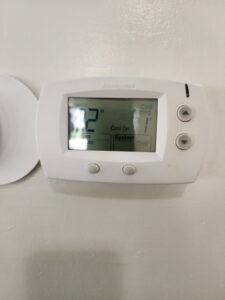
Benefits of Upgrading Your Thermostat
Upgrading to a modern thermostat can lead to improved comfort, energy savings, and reduced environmental impact. Smart features, remote control, and advanced programming options contribute to a more efficient and enjoyable indoor environment.
Upgrading your thermostat might not be the first thing that comes to mind when considering home improvements, but it can have a profound impact on your comfort, energy efficiency, and overall living experience. Modern thermostats offer a range of features that go beyond simple temperature control, providing numerous benefits that can enhance your daily life. Here are some compelling reasons to consider upgrading your thermostat:
- Enhanced Comfort: Newer thermostats, especially smart and programmable models, allow you to customize temperature schedules to match your daily routine. Wake up to a warm home, return to a cool space after work, and enjoy optimal comfort during all hours.
- Energy Savings: One of the most significant advantages of upgrading is the potential for energy savings. Smart thermostats learn your preferences and adjust temperatures based on occupancy patterns. Programmable thermostats enable you to create schedules that minimize heating and cooling when you’re away, leading to reduced energy consumption and lower utility bills.
- Remote Control: Smart and Wi-Fi thermostats grant you remote access to your HVAC system through smartphone apps or web interfaces. Whether you’re on vacation or simply forgot to adjust the thermostat before leaving, you can make changes from anywhere, ensuring your home is comfortable when you return.
- Adaptive Learning: Smart thermostats often include adaptive learning algorithms that understand your habits and adjust settings accordingly. Over time, the thermostat learns when you’re typically home and what temperature preferences you have, optimizing energy usage without sacrificing comfort.
- Zoned Comfort: If you have multiple levels or distinct areas in your home, zoned thermostats offer the flexibility to set different temperatures for each zone. This allows you to avoid heating or cooling unoccupied spaces, saving energy and enhancing comfort where you need it most.
- Integration with Smart Home Devices: Upgraded thermostats often integrate seamlessly with other smart home devices and platforms. This integration enables you to create customized automation routines, such as adjusting the thermostat when you arm your security system or when you say a voice command to your virtual assistant.
- Real-time Insights: Some modern thermostats provide real-time energy usage insights and reports, helping you understand how your HVAC system impacts your energy consumption. This information empowers you to make informed decisions about your energy usage.
- Eco-friendly Choices: By reducing energy consumption, you’re not only saving money but also contributing to a more sustainable lifestyle. Energy-efficient thermostats align with environmentally conscious choices, reducing your carbon footprint and overall environmental impact.
- Comfort While Away: With remote access, you can ensure your home is at a comfortable temperature before you arrive. This is especially valuable during extreme weather conditions, as you won’t have to wait for your home to heat up or cool down upon your return.
- Increased Home Value: Upgrading to a smart thermostat can add value to your home, especially if you’re planning to sell in the future. Potential buyers appreciate energy-efficient features and modern technology that enhances daily living.
- Reduced Wear and Tear: A well-regulated thermostat helps prevent your HVAC system from running unnecessarily, reducing wear and tear on the equipment and extending its lifespan.
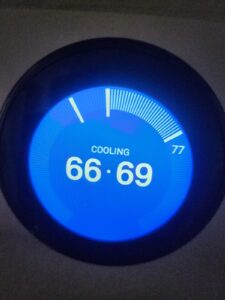
Installation and Setup Process
Installing a thermostat varies based on type and model. It’s often recommended to seek professional installation, especially for complex systems. Proper setup ensures optimal performance and accurate temperature regulation.
Troubleshooting and Maintenance Tips
Regular maintenance, including firmware updates and system checks, keeps your thermostat functioning correctly. Understanding common issues and their solutions can help you address minor problems without professional assistance.
Proper maintenance and timely troubleshooting are essential to ensure that your thermostat operates smoothly, maintaining a comfortable indoor environment and promoting energy efficiency. By following these tips, you can address common issues and keep your thermostat in optimal condition.
Regular Cleaning and Inspection: One of the simplest yet most effective maintenance practices is to keep your thermostat clean. Dust and debris can accumulate over time, affecting its accuracy and performance. Using a soft, dry cloth, gently wipe the exterior of the thermostat to remove any dirt or particles. Regularly inspect the display and buttons to ensure they’re free from obstructions.
Temperature Calibration (Analog Thermostats): If you have an analog thermostat, occasional calibration might be necessary. If you notice a significant temperature discrepancy between the thermostat reading and the actual room temperature, you can adjust the calibration screw on the back of the thermostat. Refer to the user manual for guidance on this process.
Verify Power Supply: If your thermostat is unresponsive or the display is blank, check the power supply. Ensure that the circuit breaker or fuse connected to your HVAC system is functioning correctly. Additionally, if your thermostat relies on batteries for power, replace them periodically to prevent interruptions in operation.
Location Matters: The placement of your thermostat can impact its accuracy. Avoid positioning it in direct sunlight, near vents, windows, or heat sources. Such locations can lead to incorrect temperature readings and affect your HVAC system’s performance. Choose a spot with consistent airflow and temperature conditions for accurate readings.
Check Wiring and Connections: If your thermostat is not functioning as expected, examine the wiring and connections. Ensure that all wires are securely connected to their respective terminals. Loose or damaged wires can lead to communication issues between the thermostat and the HVAC system.
Update Firmware (Smart/Wi-Fi Thermostats): If you have a smart or Wi-Fi thermostat, staying up-to-date with firmware releases is crucial. Manufacturers often release updates to improve functionality, compatibility, and security. Check the manufacturer’s website or app for any available updates and follow their instructions for installation.
Scheduling and Programming (Programmable/Smart Thermostats): If your thermostat has programmable or smart features, ensure that your schedules and settings align with your daily routine. Adjust the temperature settings for periods when you’re away or asleep to optimize energy savings without compromising comfort.
Professional Maintenance: Consider scheduling professional HVAC system maintenance, including a thorough check of your thermostat’s performance. HVAC technicians can calibrate, inspect, and clean your thermostat as part of a comprehensive service, ensuring it works seamlessly with your heating and cooling equipment.
Consult the User Manual: When encountering issues that aren’t easily resolved, refer to the thermostat’s user manual. It often contains troubleshooting guides specific to your model, offering step-by-step solutions for common problems.
Professional Help: If you’re unsure about troubleshooting or dealing with complex issues, don’t hesitate to seek professional assistance. An experienced HVAC technician can diagnose and address issues effectively, preventing potential complications and ensuring your thermostat’s optimal performance.
By following these troubleshooting and maintenance tips, you can maximize the lifespan of your thermostat, enhance your home’s comfort, and achieve energy-efficient temperature control throughout the year.
Future Trends in Thermostat Technology
As technology advances, thermostats are likely to become even smarter and more integrated with home automation systems. Predictive algorithms, AI-powered energy optimization, and increased compatibility with smart home devices are some potential trends to watch for.
Empowering Your HVAC Experience: Navigating Thermostat Types with The AC Therapist
In conclusion, the world of thermostats is diverse and rapidly evolving, offering a range of options tailored to your unique comfort and energy efficiency needs. At The AC Therapist, we understand the importance of selecting the right thermostat to complement your HVAC system and lifestyle. Whether you’re considering a programmable thermostat to optimize your schedule, a smart thermostat to harness the power of technology or a zoned thermostat for personalized comfort, your choice can have a significant impact on your home environment.
By exploring the various types of thermostats available, you empower yourself to make an informed decision that aligns with your preferences and contributes to energy savings. Each thermostat type brings its own set of benefits, from precise temperature control to remote access and adaptive learning. As your trusted local residential and light commercial HVAC contractor in the Tampa Bay area, The AC Therapist is here to assist you in navigating the world of thermostats.
Ultimately, the right thermostat enhances your daily life by delivering comfort, convenience, and cost savings. Whether you’re seeking a thermostat upgrade, installation guidance, or maintenance tips, our team is dedicated to providing the expertise you need to make the most of your HVAC system. Embrace the possibilities offered by different types of thermostats and take a step toward achieving the ideal balance between comfort and energy efficiency in your home.

